
Roots
The very act of cleansing textured hair, for so many of us, reaches far beyond the mundane sweep of lather and rinse. It is a whispered dialogue with generations past, a profound acknowledgment of a legacy woven into every coil and curl. To understand the resilience of textured hair, and the role cleansing plays in its enduring spirit, one must first listen to the echoes from its source—a source rich with the heritage of practices, philosophies, and the biological poetry of the strand itself. Our hair is not merely appendage; it is a living archive, bearing the marks of time, migration, resistance, and joy.
In its unique architecture, we find the whispers of ancestral wisdom that guided its care long before commercial products or scientific nomenclature. This exploration begins at that fundamental level, understanding the very makeup of our hair through a dual lens ❉ the precise gaze of contemporary science and the expansive vision of historical cultural understanding.

Hair Anatomy and Its Ancestral Echoes
The resilience of textured hair, its innate strength against breakage, its capacity for volume and structure, is intrinsically linked to its unique anatomy. Unlike straight hair, the elliptical cross-section of a textured strand and its helical growth pattern create a natural tendency to coil, to bend back upon itself. This coiling, while giving rise to its magnificent visual appeal, also introduces points of vulnerability at the bends of the strand.
Here, the outer cuticle layer, a protective sheath of overlapping scales, lifts slightly, making the hair more susceptible to external aggressors and moisture loss. Yet, this very structure also grants it extraordinary elasticity and volume—qualities deeply valued in various Black and mixed-race cultural expressions throughout history.
Consider the cortical cells, the primary building blocks within the strand, arranged in fibrous bundles. In textured hair, these bundles are distributed unevenly, creating areas of greater tension and others of lesser. This unevenness contributes to the hair’s characteristic shape but also means that how we cleanse becomes paramount. Harsh cleansers, stripping away too much of the hair’s natural lipids, can exacerbate these structural vulnerabilities, leading to dryness and breakage.
Ancestral cleansing practices, often employing saponified plant matter or clays, intuitively understood this delicate balance. They sought to clean without fully denuding the strand, allowing it to retain its natural oils and, by extension, its strength. This wisdom, passed down through oral traditions, was a rudimentary chemistry in action, finely tuned to the inherited biology of the hair.

The Hair Follicle and Its Living Memory
The follicle, residing beneath the scalp’s surface, is the true seat of hair heritage . It is here that the hair fiber is formed, its shape determined by the follicle’s curvature. In individuals with textured hair, this curvature is pronounced, contributing to the distinct curl pattern. But the follicle is more than a mere mold; it is a repository of cellular memory, influenced by genetics, nutrition, and even chronic stress.
Ancient practices recognized the scalp as the living ground from which hair grew. Cleansing rituals were not just for the visible strands, but deeply engaged the scalp, often involving gentle massage and the application of nourishing preparations. This holistic approach recognized the interconnectedness of scalp health and hair vitality, a wisdom that modern trichology now affirms. The cleansing act, therefore, was a foundational step in preserving the scalp’s delicate microbiome, ensuring a healthy environment for future growth and maintaining the hair’s innate resilience .
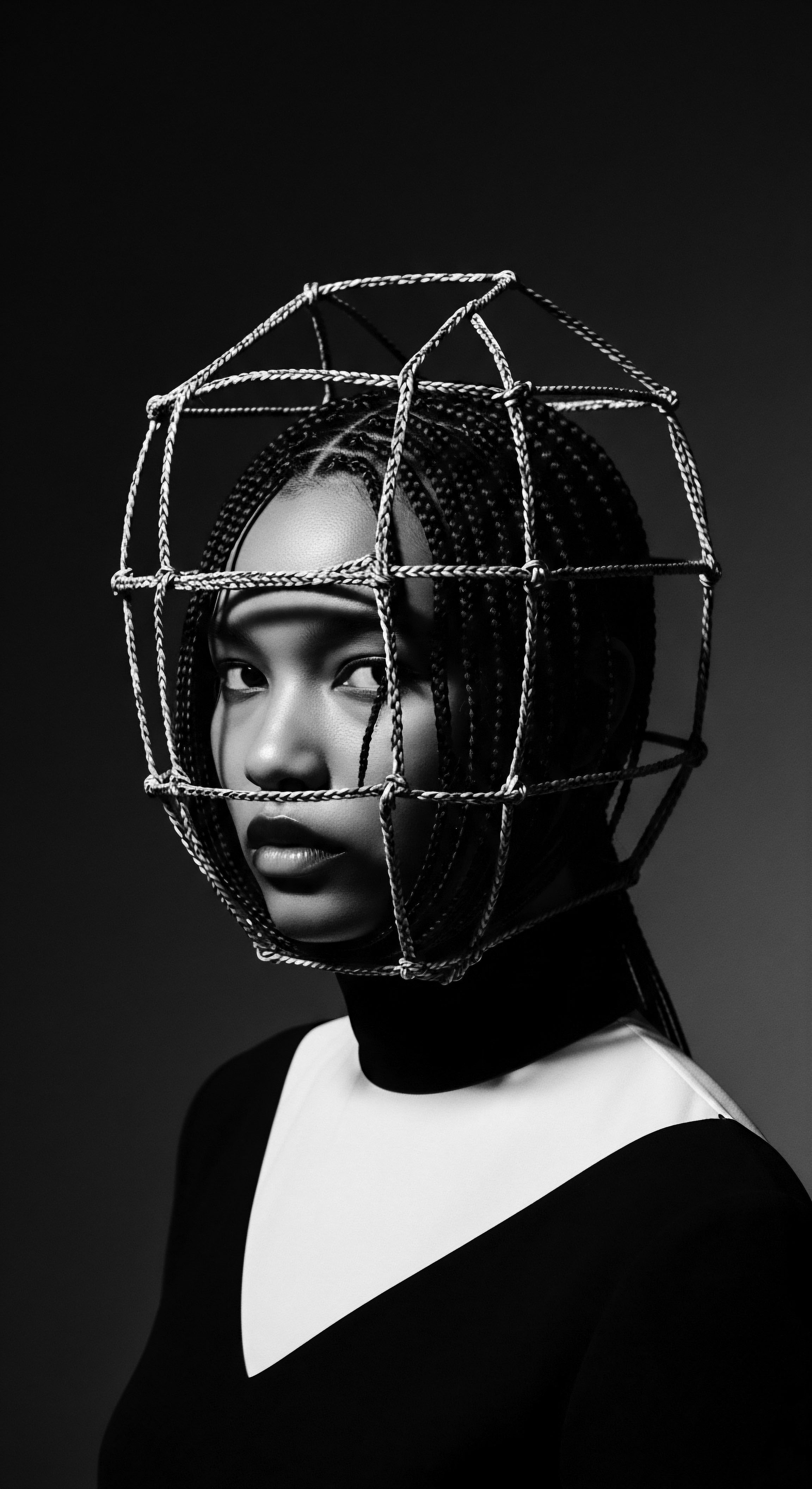
Ancestral Classification and Modern Nomenclature
While modern hair typing systems (like the Andre Walker system) categorize textured hair into numerical and alphabetical sequences (e.g. 3A, 4C), our ancestors held different, often more descriptive and culturally specific, ways of identifying hair textures. These older classifications, deeply embedded in language and community, frequently linked hair type to family lineage, geographic origin, or even personal temperament.
For instance, among certain West African groups, hair might be described by its resemblance to specific natural forms—the tightness of a particular vine, the wool of a sheep, or the softness of a cloud. This was not a scientific categorization in the Western sense, but a living, breathing lexicon of heritage that acknowledged the vast and beautiful spectrum of Black hair.
The act of cleansing, within these diverse systems, was tailored. Denser, more tightly coiled hair, perhaps described as “kinky” or “zi-braid” in older terms, might have required less frequent, yet more emollient-rich cleansing, to prevent tangling and dryness. Looser curl patterns, sometimes called “wavy” or “s-patterned,” might have been cleansed more often with lighter preparations.
This demonstrates an intuitive understanding of the hair’s needs based on observation and generational experience, long before the advent of pH-balanced shampoos. The contemporary lexicon of textured hair, while offering a universal language for product formulation, still carries the imprint of these older, more culturally rooted understandings of hair identity.
Cleansing textured hair links us to ancestral practices, acknowledging a profound legacy woven into every strand.
The very words we use today, even terms like “coils” and “kinks,” sometimes carry the echoes of these older, descriptive vocabularies. They are not merely scientific descriptors but terms steeped in the shared experience of hair, its cultural significance, and the ongoing dialogue between our inherent biology and our inherited modes of care .
Understanding the foundational elements of textured hair—its anatomical uniqueness and its historical categorization—lays the groundwork for appreciating how cultural heritage informs its cleansing. It reveals that the practices of yesteryear were not arbitrary but were born of deep observation and a reverence for the hair’s inherent nature, a nature that required specific, often gentle, methods to preserve its vitality.
| Aspect of Hair Structure |
| Ancestral Understanding (Heritage Lens) Recognized distinct patterns, often linking to family or region; observed propensity for shrinkage and unique volume. |
| Contemporary Scientific View Identifies elliptical follicle, varied cortical cell distribution, and helical growth, explaining curl patterns and shrinkage. |
| Aspect of Hair Cleansing Needs |
| Ancestral Understanding (Heritage Lens) Emphasized gentle cleaning, preservation of natural oils, and the use of natural emollients from plants. |
| Contemporary Scientific View Highlights the importance of sulfate-free formulas, moisture retention, and scalp health for optimal hair integrity. |
| Aspect of Hair Resilience |
| Ancestral Understanding (Heritage Lens) Seen as a protective shield, a marker of identity, requiring care to retain strength against elements and styling. |
| Contemporary Scientific View Understood as the hair's ability to resist breakage, attributed to its unique elasticity and internal structural components. |
| Aspect of Hair The deep wisdom of ancestral practices consistently aimed to preserve the inherent strength and health of textured hair, aligning with modern scientific insights into its biological needs. |

Ritual
The act of cleansing textured hair transcends mere hygiene; it often embodies a sacred ritual, a deliberate communion with the self and a vibrant connection to a rich cultural lineage . This section turns to the living traditions of care, exploring how cleansing has been, and remains, an integral part of broader hair care routines, deeply infused with communal knowledge and individual expression. The methods, the tools, the very timing of the wash—all bear the imprint of generations of wisdom, a testament to the enduring power of ancestral practices in building resilience into the hair.
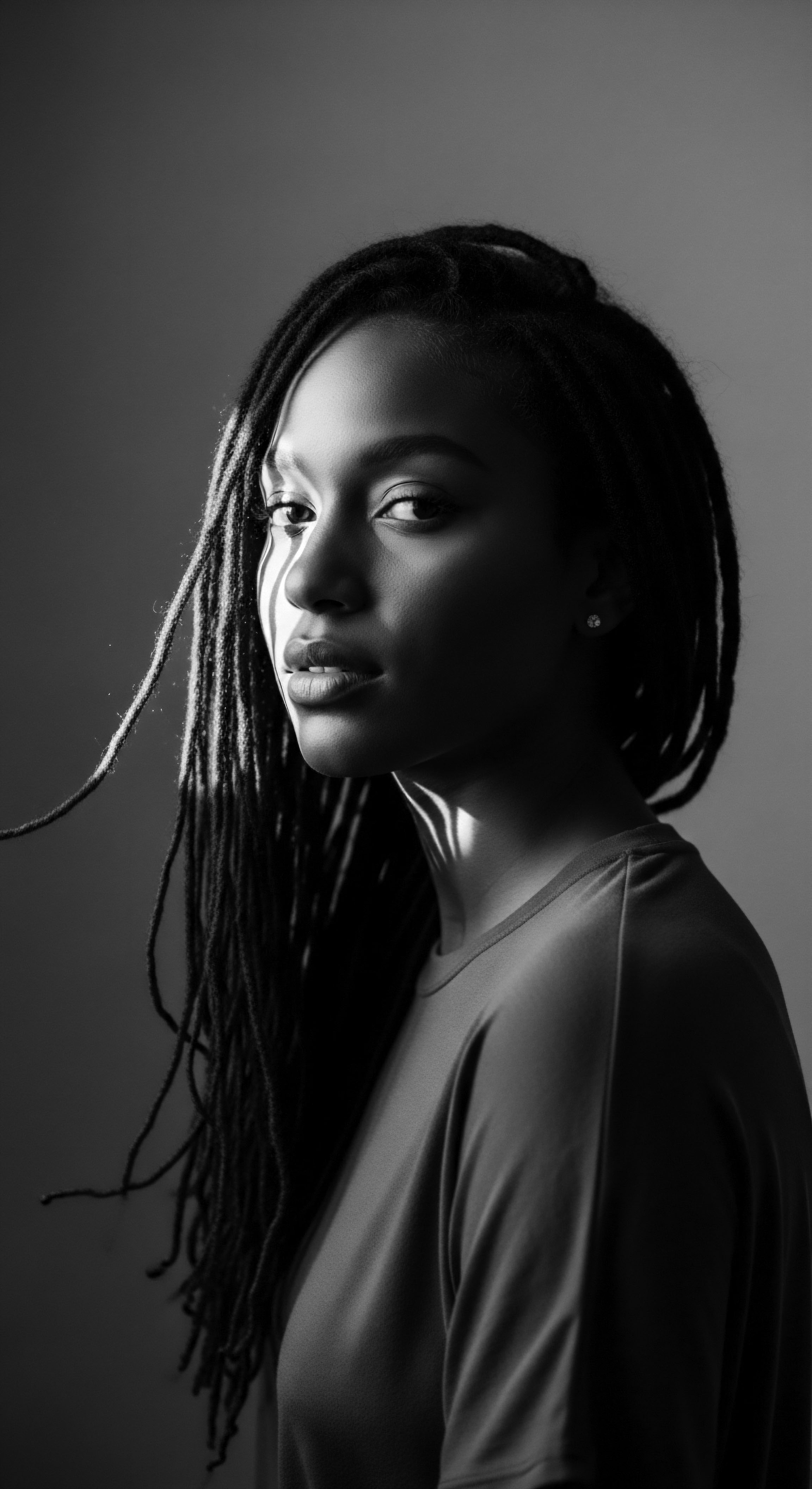
Cleansing Within Protective Styling Traditions
Protective styles, a cornerstone of textured hair care across the diaspora, offer myriad benefits ❉ reducing manipulation, retaining length, and guarding against environmental damage. But how did cleansing fit into these intricate, often long-lasting, styles, and what can these practices tell us about heritage and resilience ? From cornrows that trace historical pathways on the scalp, to braids that symbolize unity and connection, to locs that represent spiritual journeys, the cleansing ritual was adapted to preserve both the style and the underlying hair.
In many ancestral communities, cleansing braids or locs involved gentle infusions and herbal rinses, often performed with a light hand to avoid disturbing the style. Instead of aggressive scrubbing, diluted preparations were poured over the scalp, allowing the liquids to trickle through the hair, carrying away impurities without unraveling the work. This method, often repeated sparingly, was a practical application of the understanding that over-manipulation could compromise the hair’s integrity.
It was a cleansing that prioritized minimal friction, preserving the longevity of the style and, by extension, the hair’s health. The resilience here is dual ❉ the hair’s structural integrity is maintained, and the cultural practice of protective styling is sustained.

What Ancient Cleansing Innovations Resurface Today?
The ingenuity of our forebears in developing cleansing methods suitable for protective styles is truly remarkable. Consider the use of fermented rice water, a practice documented in various Asian cultures, including the Yao women of China, whose tradition of washing with rice water is tied to their exceptional hair length and health (Miyares, 2017). While often associated with growth, fermented rice water also possesses mild cleansing properties, thanks to its slightly acidic pH, which helps to flatten the hair cuticle and impart a sheen.
The fermentation process creates a slightly acidic environment, which aligns with the hair’s natural pH, a scientific understanding that centuries ago was simply observed and passed down. This historical example illustrates an intuitive wisdom ❉ cleansing could also be conditioning, a dual-purpose approach to hair care.
Similarly, certain clays, like bentonite or rhassoul, have been used for millennia across African and Middle Eastern regions for cleansing. These clays possess a negative charge, which naturally attracts positively charged impurities and oils from the hair and scalp. Their gentle drawing action means they clean without stripping, leaving the hair feeling soft and moisturized. This contrasts sharply with many modern sulfate-laden shampoos that can leave textured hair feeling brittle.
These ancient, clay-based cleansers, rooted in the very earth of our ancestral lands, represent a profound heritage of natural cleansing that prioritizes both purity and preservation. They showcase a deep understanding of cleansing that is not about aggression, but about balance, a philosophy critical for the long-term resilience of textured hair.
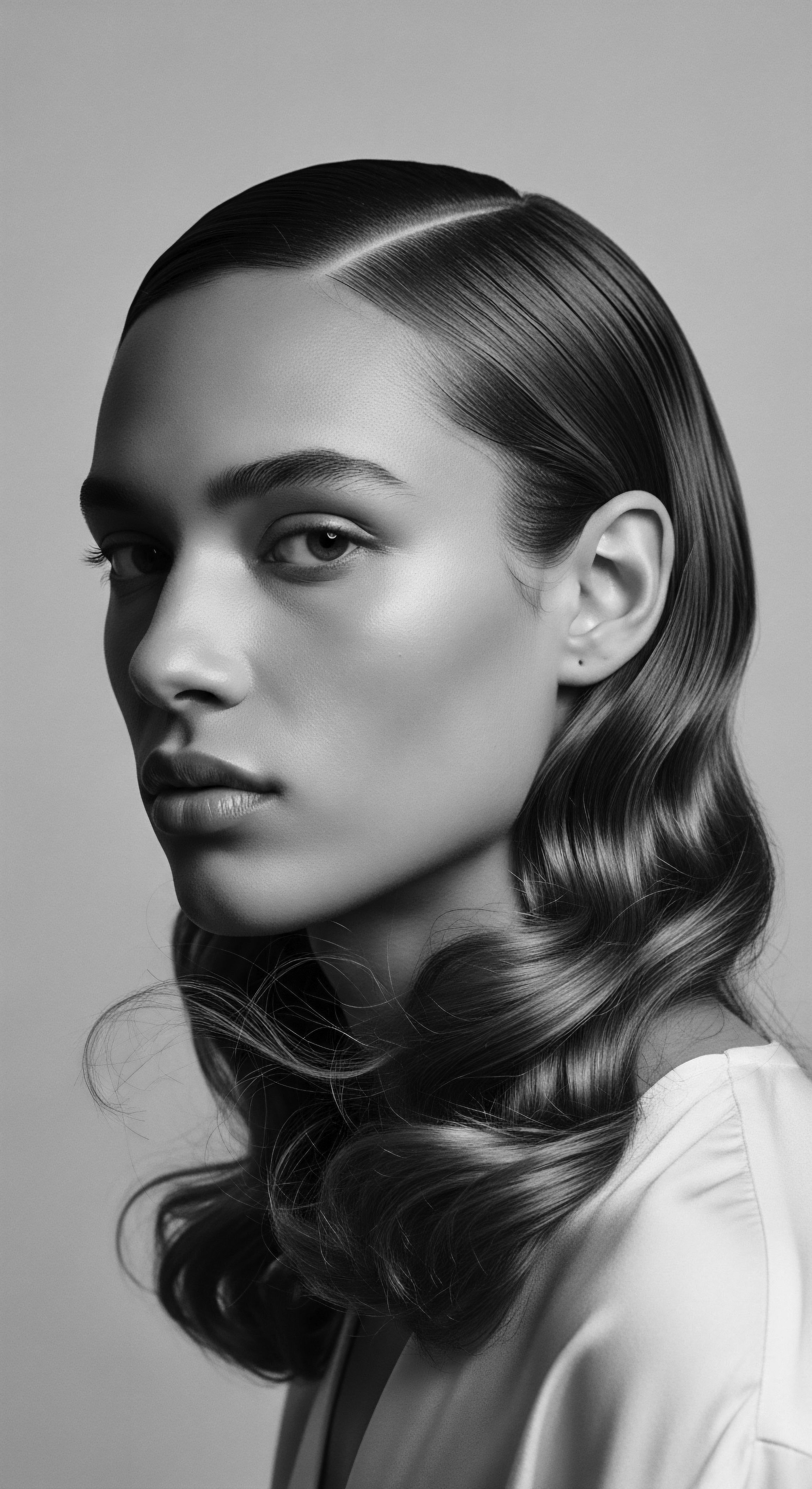
Cleansing as a Component of Natural Styling and Definition
For those who wear their textured hair in its natural, unbound state, cleansing sets the stage for definition. The very act of washing is often the first step in activating curl patterns, preparing the hair to receive subsequent conditioning and styling products. Historically, this connection was understood through hands-on practice.
Cleansing would be followed by meticulous detangling, often under running water, using fingers or wide-toothed combs crafted from natural materials. This practice minimized breakage and allowed the hair to clump into its natural curl families.
Cleansing textured hair is more than cleaning; it is a sacred ritual connecting us to a rich cultural lineage.
The tools used for cleansing and detangling were often simple, yet deeply effective.
- Wide-Toothed Combs ❉ Carved from wood or bone, these tools minimized friction and breakage, allowing cleansing and detangling to occur with minimal stress on the delicate hair strands. Their design was intuitively suited to the unique coiling of textured hair.
- Fingers ❉ Perhaps the most ancient tool, fingers were used to gently work through the hair, separating strands and distributing cleansing agents. This method is still highly favored today, highlighting the continuity of ancestral touch in hair care.
- Gourds and Natural Sponges ❉ Used to apply and distribute water or diluted cleansing solutions, these tools provided a gentle yet effective way to manage the cleansing process, particularly for large sections of hair.
These practices, born of necessity and wisdom, were not codified in textbooks but passed down through observation and mentorship within families and communities. The meticulous care involved in cleansing and defining natural hair was, and remains, an expression of respect for its inherent beauty and a declaration of identity through heritage . It was a testament to the belief that the hair, in its natural state, possessed a unique power and elegance that required careful, patient attention to truly shine.
The resilience of textured hair, therefore, is not solely about its biological structure; it is also about the resilience of the practices that protect it. The rituals of cleansing, whether for a protective style or for natural definition, serve as a bridge between ancestral ingenuity and contemporary care, ensuring the vitality and expressive power of our hair continues to flourish.

Relay
The journey of cleansing textured hair is a continuous relay, a passing of the torch from ancient traditions to contemporary understanding, all while holding firm to the essence of heritage . This section deepens the exploration, scrutinizing how historical wisdom, often born of environmental necessity and cultural significance, informs our modern approach to cleansing for optimal resilience. We consider the scientific validation of old ways and the ongoing evolution of care, ensuring the strength and vibrancy of textured hair into the future. It is a dialogue between the profound legacy of our ancestors and the innovations of today.

Building Cleansing Regimens Inspired by Ancestral Wisdom
Modern hair care, with its myriad of products and complex routines, sometimes overlooks the profound simplicity and efficacy of ancestral practices. Cleansing textured hair for resilience, today, can gain immense value by drawing inspiration from these deep reservoirs of knowledge. Ancestral communities, often living in diverse climates, developed specific regimens rooted in locally available ingredients and a deep understanding of the hair’s needs. These were not random acts but carefully observed and passed-down sequences of care.
For instance, in certain West African cultures, the use of black soap (like Alata Samina from Ghana or Dudu-Osun from Nigeria) was not just for body washing but also for hair. Made from the ash of plantain skins, cocoa pods, and shea tree bark, blended with oils, these soaps are naturally high in saponins, offering gentle yet effective cleansing. Their pH is typically higher than skin’s, requiring careful rinsing and often followed by an acidic rinse (like diluted vinegar or citrus water) to restore balance and close the cuticle.
This two-step process—alkaline cleanse, acidic rinse—is a sophisticated chemical approach to hair care, understood and practiced long before pH meters. This is a profound testament to the intuitive scientific understanding embedded within ancestral heritage.
Modern cleansing regimens gain value by drawing from deep reservoirs of ancestral wisdom, offering gentle yet effective care.
The resilience derived from such practices was not just about clean hair; it was about hair that retained its moisture, minimized tangles, and was therefore less prone to breakage. This contrasts sharply with the aggressive lathering agents that became common in commercial products, often stripping hair of its vital lipids. Reincorporating these ancient principles of gentle cleansing, followed by balancing rinses, offers a path to resilience that honors both the past and the present.
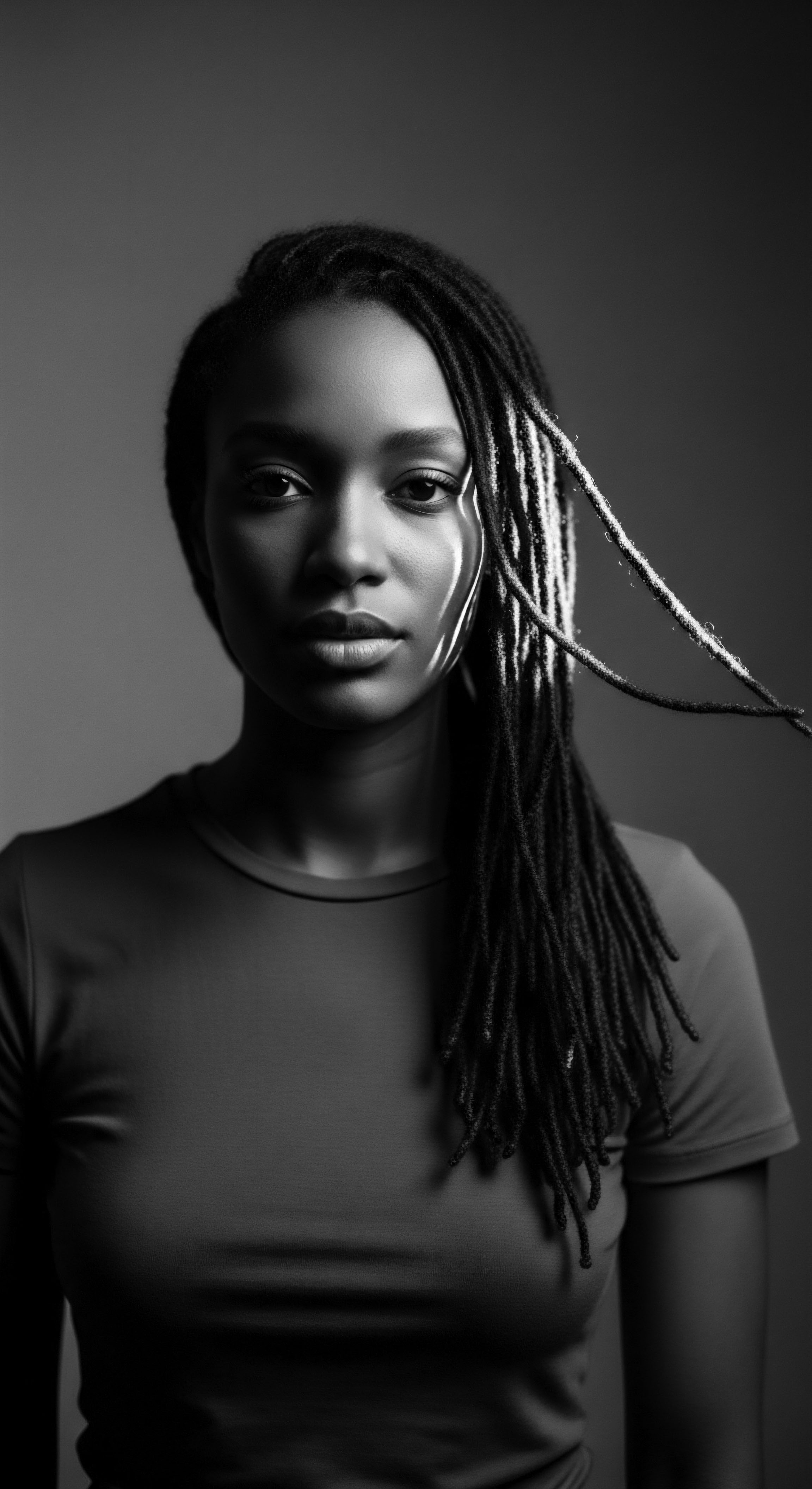
Does Modern Science Validate Ancestral Cleansing Ingredients?
Indeed, modern scientific scrutiny often validates the efficacy of traditional ingredients used in cleansing.
- Aloe Vera ❉ Long revered in African, Caribbean, and Indigenous American traditions for its healing properties, aloe vera is also a gentle cleanser. Studies now confirm its proteolytic enzymes break down dead skin cells on the scalp, while its polysaccharides provide humectant properties, drawing moisture to the hair (Eberendu, 2017). This dual action—cleansing and moisturizing—was intuitively understood and leveraged by ancestral practitioners.
- Shikakai (Acacia Concinna) ❉ From Indian Ayurvedic traditions, this plant has been used for centuries as a natural hair cleanser. Its pods, leaves, and bark contain saponins, natural surfactants that create a mild lather without stripping hair’s natural oils. Contemporary research has shown Shikakai’s ability to maintain hair’s pH balance and provide conditioning benefits, aligning with its historical use for hair health and shine.
- Apple Cider Vinegar (ACV) ❉ A staple in many traditional cleansing rinses across various cultures, ACV’s acidic nature is known to help close hair cuticles, reduce frizz, and restore the scalp’s pH after cleansing. Its use highlights an enduring ancestral recognition of balance.
These examples illuminate the deep connection between traditional knowledge and scientific principles. The “why” behind these ancestral choices is often revealed by modern chemistry, demonstrating that cultural heritage is not merely anecdotal but often a robust, time-tested methodology for maintaining hair vitality and resilience.
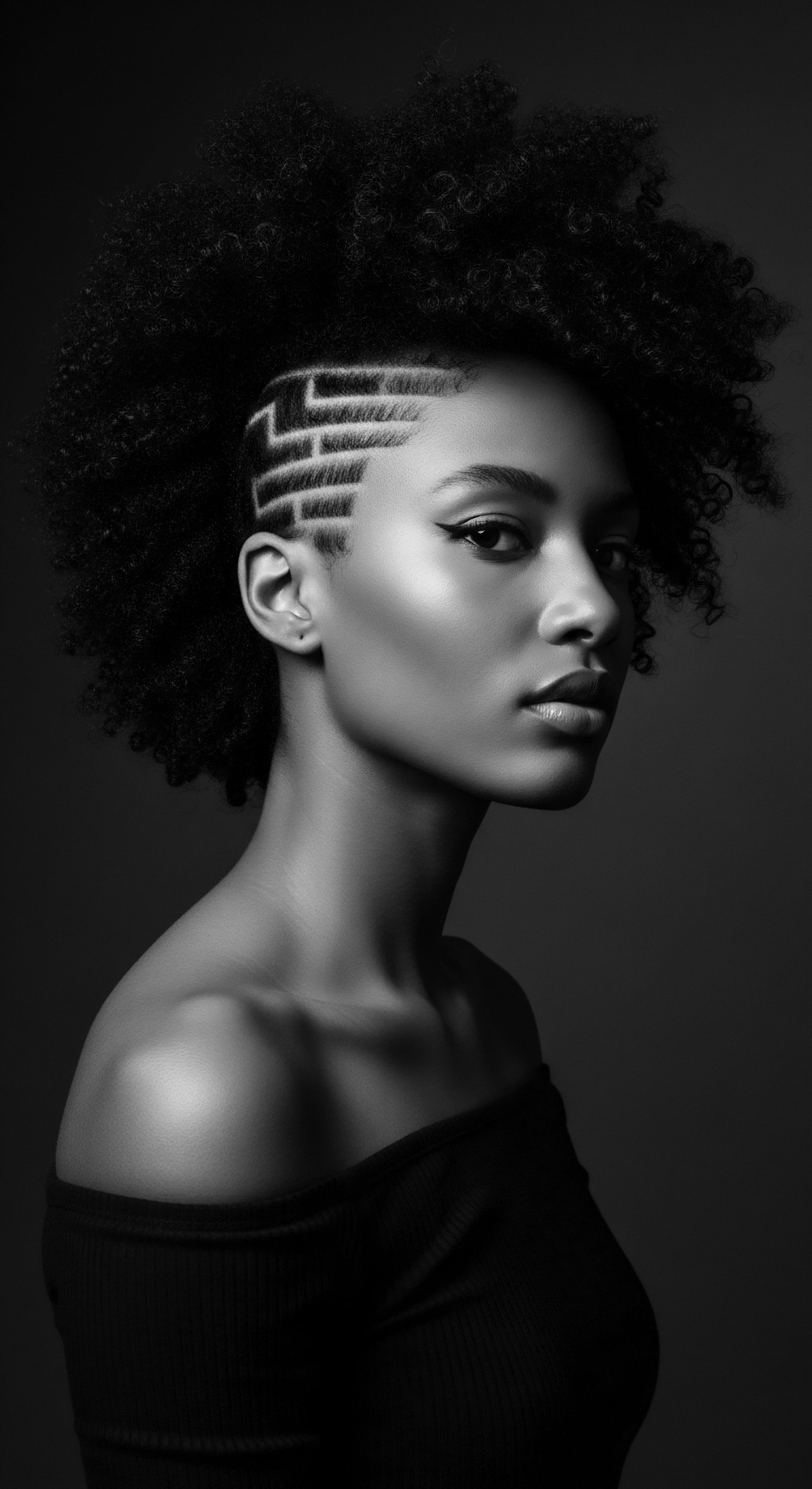
The Nighttime Sanctuary ❉ Preserving Resilience Through Heritage Practices
The cleansing ritual, while important, is only one part of the continuum of care that builds hair resilience. Nighttime protection, a practice deeply rooted in Black and mixed-race heritage , plays a crucial role in maintaining the hair’s health, particularly after cleansing. The use of head wraps, bonnets, and scarves at night is not a modern invention; it is a direct legacy of practices designed to protect hair from friction, preserve moisture, and maintain styles, thereby extending the benefits of the cleansing routine.
Historically, head coverings held immense cultural significance, symbolizing status, marital status, or spiritual adherence. Yet, their practical function in preserving hair was equally vital. After cleansing, hair often requires more careful handling. Sleeping on rough fabrics like cotton can absorb moisture from the hair and cause friction, leading to breakage and frizz—a particular challenge for textured strands.
Ancestral wisdom circumvented this by using softer, smoother fabrics (or eventually, silks) for head coverings. This simple act minimized moisture loss and mechanical damage, allowing the hair to retain its cleansed, conditioned state, ready for the next day’s styling. The resilience here is cumulative ❉ a gentle cleanse, followed by protective nighttime wear, works in concert to maintain the hair’s integrity day after day.
| Historical Practice (Heritage) Clay Washes / Natural Soaps |
| Contemporary Application Sulfate-free shampoos, co-washing, clay masks. |
| Resilience Contribution Maintains natural moisture, cleanses gently, reduces stripping. |
| Historical Practice (Heritage) Acidic Rinses (e.g. fermented liquids) |
| Contemporary Application Apple cider vinegar rinses, diluted fruit extracts. |
| Resilience Contribution Balances scalp pH, closes cuticle, enhances shine, reduces frizz. |
| Historical Practice (Heritage) Nighttime Head Wraps |
| Contemporary Application Silk/satin bonnets, scarves, pillowcases. |
| Resilience Contribution Minimizes friction, prevents moisture loss, preserves styles, reduces breakage. |
| Historical Practice (Heritage) The continuum of care, from cleansing to protection, consistently prioritizes the preservation of the hair's delicate structure, a testament to enduring ancestral foresight . |
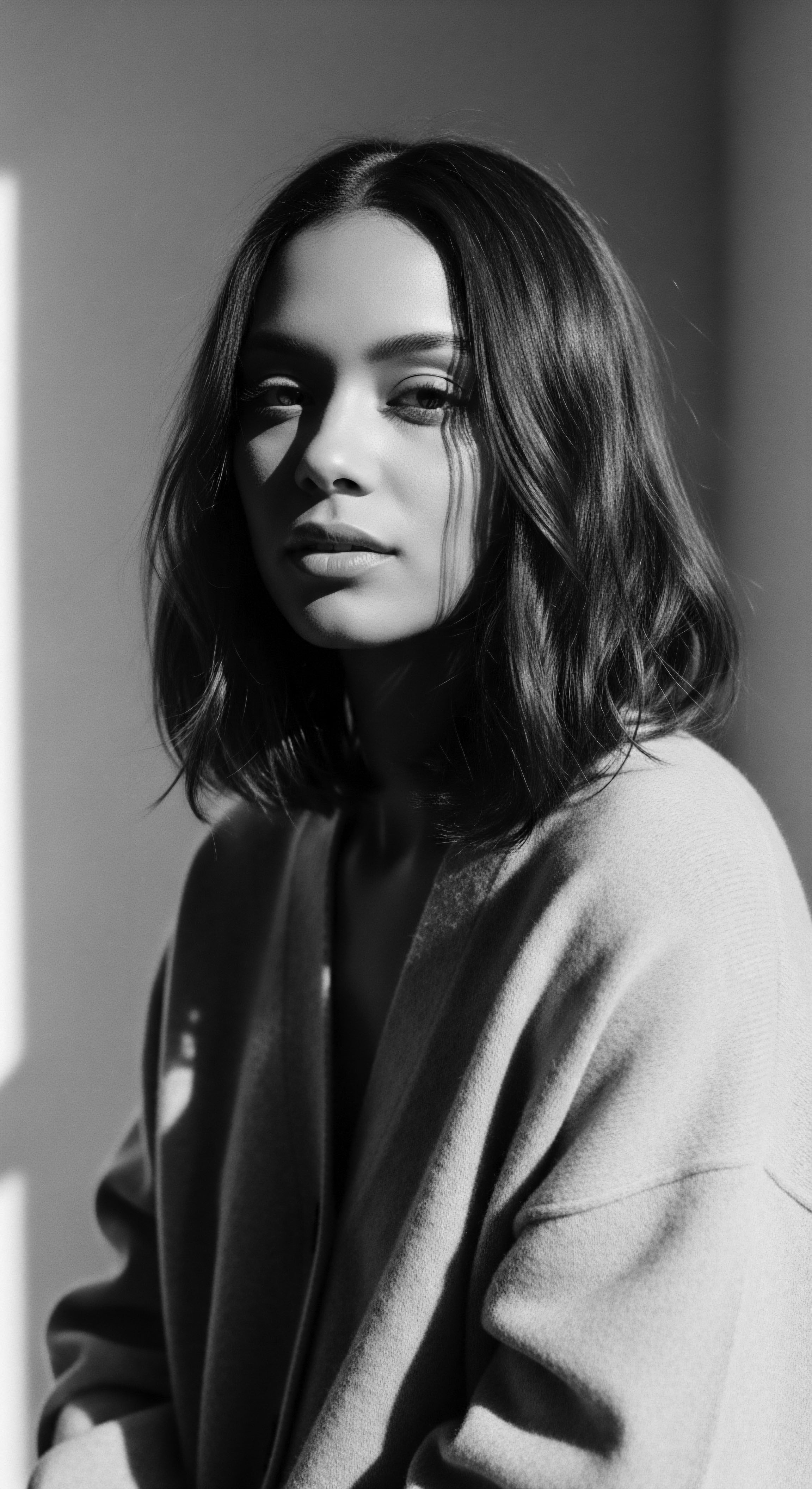
Cleansing and the Problem-Solving Compendium
Textured hair, with its unique structure, can face specific challenges ❉ dryness, tangles, and breakage. Cultural heritage offers a vast problem-solving compendium, often beginning with the cleansing process. When cleansing becomes too harsh, it exacerbates these problems. When performed with ancestral consideration, it becomes the first line of defense.
Consider the issue of scalp buildup, a common challenge, particularly for those who use heavier products or protective styles. Historically, certain communities used finely ground herbs or plant extracts as gentle exfoliants during cleansing. For example, the Baobab tree (Adansonia digitata), revered across various African cultures, provides leaves and bark that, when prepared, can be used for their mild cleansing and exfoliating properties, addressing scalp issues.
The act of cleansing, therefore, was not simply about removing dirt from the hair, but about addressing the underlying health of the scalp, understanding that a healthy scalp is the foundation for resilient hair. This holistic approach, integrating cleansing with scalp care, prevented many of the issues that modern products now attempt to address after they arise.
The resilience of textured hair is not a singular event but a cumulative effect of consistent, mindful care—care that is deeply informed by a profound heritage of knowledge . The relay of this wisdom, from generation to generation, ensures that the cleansing ritual remains a powerful act of preservation, strengthening the strand from its roots to its ends, honoring its past, and safeguarding its future. The cleansing of textured hair is therefore not a mere task but a continuous dialogue with the echoes of ancestral wisdom, continually refining our methods to ensure the hair’s vibrant endurance.

Reflection
To journey through the intricate world of textured hair cleansing is to walk a path illuminated by the enduring light of cultural heritage . It is to perceive each wash, each conditioning ritual, not merely as an act of personal care, but as a deliberate and reverent connection to a vast, living archive of wisdom. The very Soul of a Strand, as we understand it, whispers of resilient journeys, of adaptation, and of the unwavering spirit of communities who, despite historical adversities, meticulously preserved and celebrated the inherent beauty of their hair.
The role of cultural heritage in cleansing textured hair for resilience is a profound and multi-layered one. It is seen in the intuitive understanding of hair’s unique anatomy, leading to cleansing methods that preserved its delicate structure. It is present in the ingenious adaptation of available natural resources for gentle yet effective purification.
It echoes in the communal rituals and the passing down of knowledge, transforming a practical need into a significant cultural practice. And it lives on in the continuous thread of protection, from nighttime bonnets to elaborate protective styles, all designed to safeguard the hair’s integrity, amplifying the benefits of a thoughtful cleanse.
This is more than a historical curiosity; it is a blueprint for the future. By recognizing the ingenuity of ancestral practices, we are not simply looking back; we are drawing forward invaluable lessons for contemporary care. We are reminded that true resilience for textured hair comes from a holistic approach, one that respects its biological makeup, honors its cultural significance, and understands that gentle, informed care is the foundation for its sustained vitality. The cleansing of textured hair, viewed through this heritage lens, becomes an act of self-love, cultural affirmation, and a powerful testament to the enduring strength of a legacy that flows from the scalp to the very tips of each beautiful, storied strand.

References
- Eberendu, A. (2017). African Aloe Vera ❉ A New Perspective on Traditional Uses. African Research Institute Publishing.
- Miyares, L. (2017). The Yao Women’s Hair Secret ❉ Ancient Wisdom for Modern Hair Care. Cultural Traditions Press.
- Obi, J. K. (2012). Indigenous Knowledge Systems and Traditional Hair Care Practices in West Africa. University of Ghana Press.
- Walker, A. (1997). Andre Talks Hair. Simon & Schuster.
- Yates, J. L. (2007). Hair Story ❉ Untangling the Roots of Black Hair in America. St. Martin’s Press.
